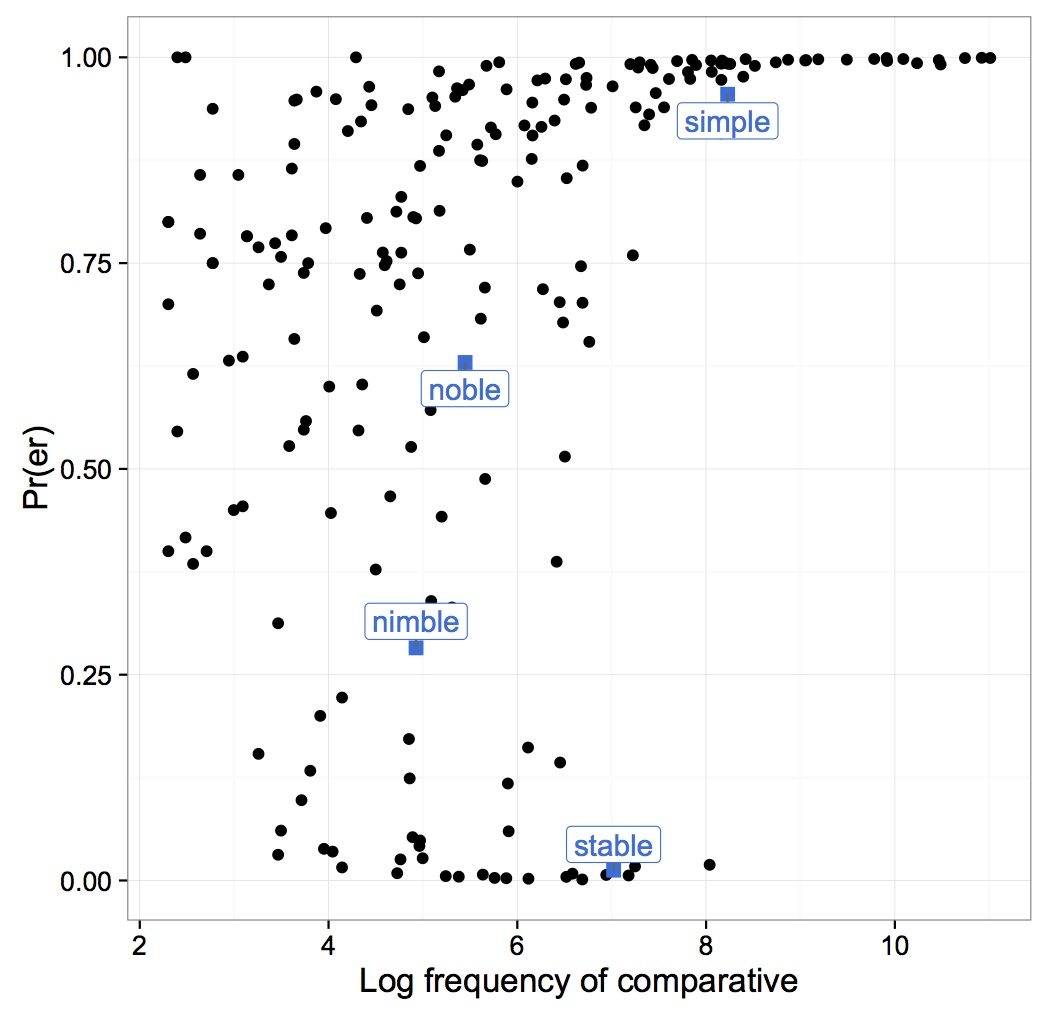Emergent idiosyncrasy in English comparatives
Abstract
The English comparative can be realized with -er (happier) or more (more happy). Although the choice between -er or more is influenced by phonological factors, it is ultimately idiosyncratic to particular adjectives. However, this idiosyncrasy depends on frequency, with more frequent adjectives behaving more idiosyncratically than less frequent ones. We present the results of a computational model which uses UR constraints (Pater et al. 2012) to represent lexical idiosyncrasy. We situate these UR constraints within an online error-drive learner in which (1) learning data are sampled according to lexical frequency, and (2) UR constraints are induced only when needed, and decay when they are not used. Given these two assumptions about how learning proceeds, we find that the behavior of high-frequency adjectives depends more on the learner's experience with those adjectives, while the behavior of low-frequency adjectives depends on the grammar.
Documents:
Paper in the proceedings of NELS 47, Amherst MA
Slides from NELS 47, Amherst MA
Poster from AMP 2016, Los Angeles

Lexical idiosyncrasy in COCA